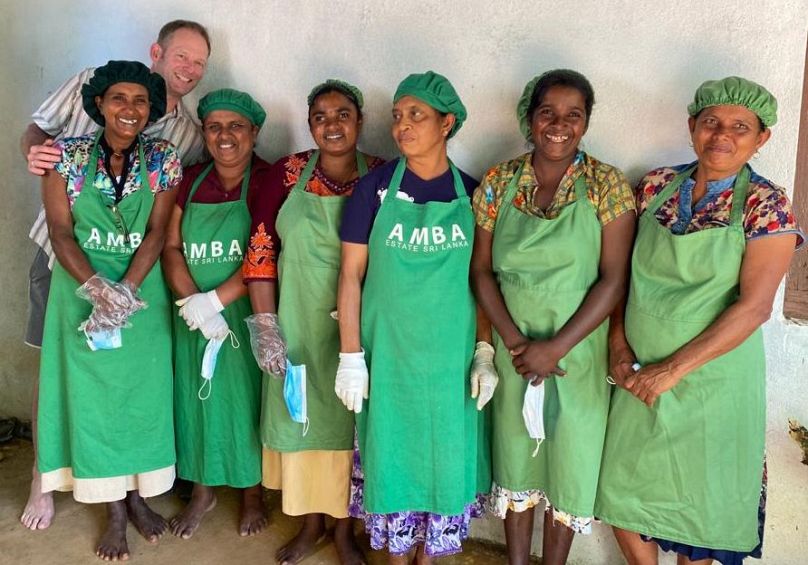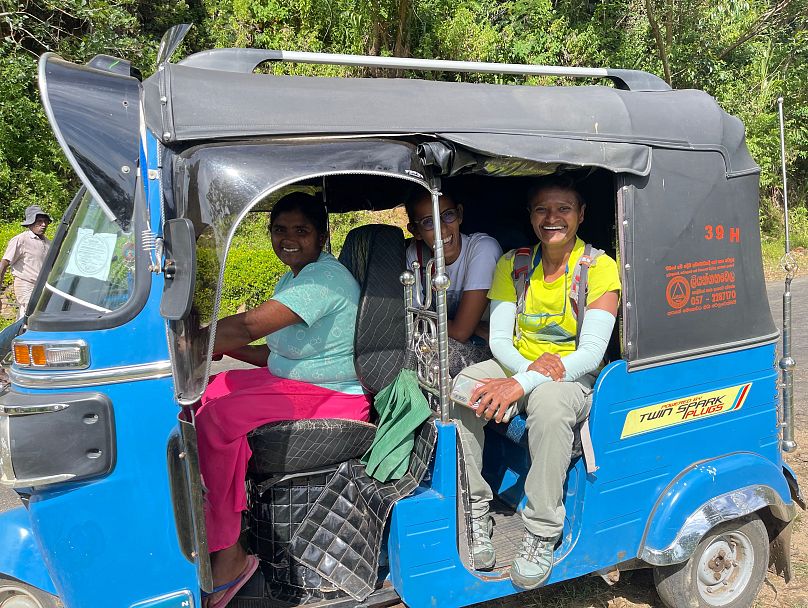The first of the Pekoe Trail’s 22 segments was opened in 2021, shining a light on life in Sri Lanka’s tea estates.
Most countries have their own iconic, national walking trail. But for a long time, despite its stunning nature and plethora of tourist offerings, Sri Lanka didn’t.
Adventurer and travel specialist Miguel Cunat decided to change that by creating the Pekoe Trail.
The route takes walkers through the country’s tea plantations and hillside communities. Though the paths themselves have been used for years by locals, the creation of the trail has now mapped, signposted and maintained them.
The Pekoe trail is an incredible new tourist offering but it’s also helping to change the lives of locals.
What is the Pekoe Trail?
The Pekoe trail is a 300 km walking route through the island of Sri Lanka. It was developed through the Tourism Resilience Project with funding from the European Union and the U.S. Agency for International Development.
The trail is broken up into 22 sections, averaging around 12 km each, so whether you’re looking for a day hike or a multi-day expedition, there’s something to suit everyone.
“The beauty of it is that within the same trail, everything changes so much because you’re going through tea plantations, pine forests and eucalyptus forests,”
“We go through main attractions like Ella Rock or the Nine Arch Bridge and you cross paddy fields, which you don’t really expect when you’re in tea country.
“You’ve got so much going on that you don’t expect when you’re exploring these areas.”
The trail starts in the famous city of Kandy and heads south towards Hatton and Horton Plains National Park. It then heads east through Haputale and Ella before looping around and finishing in the beautiful city of Nuwara Eliya.

Who is the Pekoe Trail suitable for?
There are sections of the Pekoe Trail that are suitable for all ages and abilities.
“Some people think I’m really fit because I do it, but actually I do it despite the fact that I’m not fit,” laughs Thushni.
“Three years ago, I was genuinely bedridden, unable to walk and now I’m here doing these trails and having done most of them. It’s just about knowing which ones suit which person best.”
Some trails follow the path of an old cartway or along a railway line meaning they’re usually easy, flat terrain. Other routes which may be a steep uphill climb, can always be reversed into a downhill walk if you’re not confident in your fitness.
But it’s not just about fitness. When choosing which trails you’re going to do, you might also need to consider how comfortable you are with walking next to steep drops.
There’s one trail in particular which springs to Thushni’s mind. Popular with train enthusiasts, this route is a really easy path which goes along a railway track and through a tunnel before climbing up a hill to walk parallel with the line.

“It’s one of the easiest but we can’t sell it to everyone because when you’re climbing up parallel, you’re at the edge of it, and then it goes down to the railway line, straight down. It’s a narrow pathway that goes right along the edge,” she explains.
What is the best way to explore the Pekoe Trail?
In short, with a guide. While the route is fairly new and its peaceful atmosphere is a real selling point, it does mean that sometimes you can go for hours without seeing another person.
“God forbid if someone falls and sprains their ankle and you’re alone, someone needs to backtrack and you need a lot of local knowledge,” explains Thushni.
“It could be a really dry day on that date. But if it rained for a week before that, some of those paths would not be accessible and you need someone who knows.”
Not only will you be keeping yourself safe but by walking with a local guide, you’re also helping to support the area and bring money to small communities.
Thushni says that the creation of the Pekoe trail has allowed local people to create businesses where there were none before – guiding, shops, homestays and tuk-tuk drivers.
“No one ever bothered to come that way before so there was no need for a shop. But now there are people,” she adds.
The Pekoe Trail is improving the lives of women
In particular, the arrival of more tourists along the Pekoe trail is transforming the lives of local women in Sri Lanka.
Much of the route goes through tea estates where the life of a tea picker is “a very challenging, thankless job”, according to Thushni.
By making the lives of the tea pickers more internationally visible, it has put pressure on estate owners to improve the conditions for the women who work there.

One such estate leading the change is Amba – there the focus is on quality over quantity of tea and the workers are part of a profit share scheme.
Over the past ten years, they have increased the wages of their workers tenfold. Amba has also created a chutney cooperative which provides equipment to staff who want to produce chutneys and pickles to sell to tourists.
In the past, the only way for tea pickers to improve their lives was to move elsewhere and work as housemaids. Now they’re able to stay in their homes with their families and make a living. Something we all take for granted.
Where should I stay whilst I walk the Pekoe Trail?
A great way to continue supporting the local economy, as well as enjoying a welcoming and authentic experience, is to book a homestay.
First started in the village of Kithalella and inspired by an Australian woman called Karen, The Ella Good Neighbour Organisation has helped many women in communities renovate their homes and become hosts.
“They can really proudly welcome guests into their house and show them their flavour of hospitality, which is a great way to strengthen them both financially and morally,” says Thushni.
Not only has this helped the women to become more financially independent, but it’s also inspiring the next generation of women to dream bigger for their futures.

Thushni also tells the story of a woman who became a tuk-tuk driver, something which is traditionally a man’s role in Sri Lanka.
“She decided ‘I need to look after my kids, I need to take them to school, I will learn to ride my tuk-tuk.’ And then her husband taught her how, and then she’s the one who takes them to school and back.”
With her newfound skill, this woman has also been employed by Amba Estate to transport their guests and is able to earn an extra income for herself.
“When it comes to small cottage industries, there is a tendency for people to think business is a man’s job, but there are young women coming up with their artisanal teas and setting up businesses and growing their own little empires around these areas, which is really uplifting to see,” Thushni explains.
“It really is changing the story of the hills, what’s happening in these areas is very encouraging. And the more that happens, it’s like a ripple effect because you inspire more and more people. So that’s what’s really important.”

0 Comments